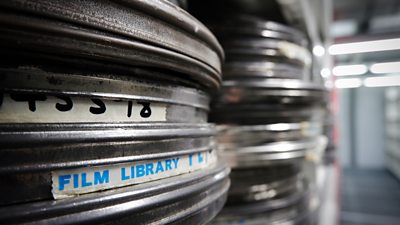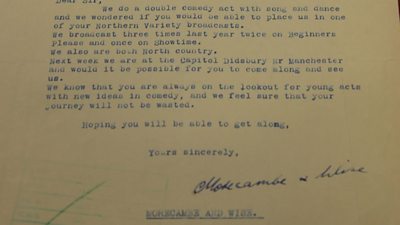Βι¶ΉΤΌΕΔ Archives Technology & Services manages one of the world’s oldest and largest multimedia archives. Our content collections grow on a daily basis.
We manage a diverse range of collections and support research, reuse and access to Βι¶ΉΤΌΕΔ content for those making content on behalf of the Βι¶ΉΤΌΕΔ’s public services.
The Βι¶ΉΤΌΕΔ has agreements in place with the British Film Institute and the British Library to facilitate research access to Βι¶ΉΤΌΕΔ programmes. Find out more on our Archive Access for non-commercial use page.

Television
The earliest television recordings are on film and date from the end of 1946. Greater coverage of television output was kept from 1948 and the archive collection covers multiple formats, both physical and digital.

Radio
The Βι¶ΉΤΌΕΔ began recording some radio output in the early 1930s, often to enable audio to be broadcast at different times including on the Empire Service (now the World Service) from when it started in 1932. The radio collection houses many different formats reflecting the development of recording technology over the decades.

Documents and Written Material
The Written Archives collection holds the documents created by the Βι¶ΉΤΌΕΔ since it was founded in 1922. The collection contains a range of material from including scripts, letters and Βι¶ΉΤΌΕΔ publications.

Photographs
The Photographic Collection contains approximately 7 million images, dating back to the 1920s. Most of the images are programme publicity shots, as well as people, building, technology and behind the scenes images. Material is held on a number of formats reflecting the development of camera technology over the decades.

Music
Βι¶ΉΤΌΕΔ Archives Music Collection consists of two distinct collections; the Commercial Music Collection and the Sheet Music Collection.
The Commercial Music Collection was established in 1932 and is an extensive collection of both popular and specialist music ranging from the Top 40 pop charts to classical, world music, blues and jazz. The collection includes numerous formats and can be accessed by Βι¶ΉΤΌΕΔ and independent programme makers who are making Βι¶ΉΤΌΕΔ programmes.
The Sheet Music Collection was established in 1923 and holds many rare and unique materials composed or arranged for use by the Βι¶ΉΤΌΕΔ. The collection is used by the Βι¶ΉΤΌΕΔ's performing groups.

Heritage
With so many decades of broadcasting behind it, the Βι¶ΉΤΌΕΔ has accumulated a fascinating Heritage Collection which includes a wide range of material such as broadcasting equipment, merchandise, promotional material, paintings, drawings and sculptures.

Significant objects include the microphone used by King George VI after the declaration of war in September 1939, and Alistair Cooke’s typewriter used for the popular and long-running radio series Letter from America.
Some of the Heritage Collection is on display throughout Βι¶ΉΤΌΕΔ buildings and much of the rest is on loan to the National Science and Media Museum in Bradford which is able to make it accessible through exhibitions and events.